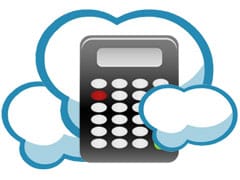
Spring
is here and that’s the perfect time to try something new in your business to
make things fresh. Here are seven ideas
to try in your business; pick the one that’s most likely to put the spring in
your sales.
1.
BOGO
“Buy
one, get one” or BOGO deals are always hot and never grow old. Even if it’s not common in your industry, see
if you can adapt and create a deal like this.
The best thing about a BOGO strategy is it spreads more of your product
or service around to a wider customer base, which can spur referrals or
word-of-mouth, the best kind of sale.
Here’s
an example of a BOGO applied to a service: Purchase a seat at a training
workshop and bring a co-worker at no extra charge (or charge the price of
materials and lunch to cover costs). You
can also offer one month free (cheaper than offering 10 percent off on an
annual basis) if you have a service that is performed over time.
2.
Weekend
Sale
Sales
can move a lot of people to action. The
key is to limit the time that they can get the discount to a very small
window. Hold a time-limited sale when it
is slow for you (could be during this month when people are hit with tax bills)
to boost your volume.
3.
Freshen
Up Your Displays
If
you have a storefront, when is the last time you’ve freshened up your
look? Retail businesses work hard at
this, but even if you aren’t in retail, take a look at what the customer sees. Is it inviting? Fresh?
Pleasant? If not, do some spring
cleaning!
If
you work from home or have a virtual office, your website is your
storefront. See if it needs some spring
cleaning so that you look more attractive to your prospects and clients.
4.
Introduce
New Features
Make
a slight change to your existing product by adding a new feature, offering it
in a new color, or something similar. It
will feel a little fresher to your clients, which may cause an increase in
perceived value.
5.
Start a New Niche
Once
you’ve gotten a couple of clients from a new industry, you’re off and
running. You will be able to learn from
working with this new industry, and then you will be more valuable to others in
that space.
Take
a look at your client list, and see where you have just a few clients in the
same industry but would like more clients like them. Then go for it!
6.
Flavor
of the Month Club
Baskin-Robbins
used to have a “flavor of the month” so that customers would be enticed to come
into their ice cream shops over and over again.
You may be able to have an “item of the month” or even a VIP club where
your customers get something new each month.
Your VIP Club could also include priority treatment with specials or
discounts. VIP clubs done right are
especially effective in restaurants and retail, but can work in other
industries too. The goal is to increase
the frequency of visits to your business by enticing clients to become
regulars.
7.
The
Biggest Opportunity of All
We
often overlook the top opportunity that’s under our own noses: our current and past clients. They trust us the most, which is the highest
hurdle to new business. If you haven’t
contacted your top clients in a while, make a point to reach out. More sales could be just a phone call
away.
Now
it’s time to spring into action on the one idea that resonates most for your
business.

